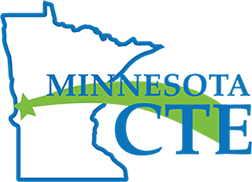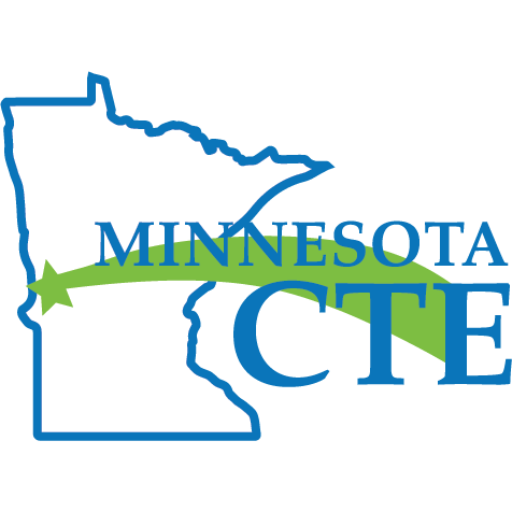Trade and Industry (T&I) Education
Building & Moving

Background
Trade and Industry (T&I) Education prepares individuals for employment in a wide range of industrial occupations, including preparation for apprentice trades, technical occupations, and other industrial and service occupations. T&I careers include skilled trades and service occupations that involve designing, producing, processing, assembling, maintaining, servicing, or repairing any product or commodity.
T&I is one of the three original Career and Technical Education (CTE) areas, created in 1917 by the Smith-Hughes legislation. T&I has evolved in the more than 100 years since its inception from welding and woodworking to include good paying, highly skilled, and sought after careers in manufacturing, engineering, transportation, construction, and supply chain logistics. The student organization for T&I, SkillsUSA, was formed in 1965 originally as Vocational Industrial Clubs of America, or VICA. As of 2024, more than 247 districts offer T&I programs in Minnesota, including 580 teachers and 69,130 students grades 7-12.
T&I comprises the Trade & Industry career field on the federal Career Wheel. T&I includes three to four clusters: (a) Construction, (b) Manufacturing, and (c) Supply Chain & Transportation. The Digital Technology cluster is shared between T&I and Business and Marketing (B&M), but is also a cross-cutting cluster impacting all CTE fields.
Licenses for this career field include:
– Broad-based license for the entire T&I field: does not exist in Minnesota.
– Careers license for the Construction cluster: Construction careers-300100.
– Careers license for the Manufacturing cluster: Manufacturing careers-300200.
– Careers license for the Supply Chain & Transportation cluster: Transportation careers-300700.
– Cross-cutting career-license for the Digital Technology cluster: Communication Technology careers-300000.
– Cross-cutting careers license for the Management & Entrepreneurship cluster: does not exist yet in Minnesota.
– Cross-cutting career-license for the Marketing & Sales cluster: does not exist yet in Minnesota.
Note: These CTE licenses are eligible for Minnesota Department of Education program approval, which affords access to CTE Revenue funding, federal Perkins grants, and more. This is in contrast to the Technology (100100) license, which may have some similar skills and standards as these three licenses, but is not a CTE license and is ineligible for these funding options.
Minnesota is Focused on Building and Moving the Economy
Minnesota’s manufacturing, construction, transportation, and supply chain sectors are the backbone of the state’s economy. Our history of innovation—along with our highly skilled workforce—makes the state a hotbed of industry and manufacturing. Minnesota’s diverse, technology-driven advanced trades and industry sectors are strong in high-tech manufacturing, computers and electronics, medical devices, vehicles, and more.
- 2nd in Medical Device Manufacturing (Lightcast, 2023)
- 3rd in Navigational, Measuring, Electromedical, and Control Instruments Manufacturing (Lightcast, 2023)
- 3rd in Computer Storage Device Manufacturing (Lightcast, 2023)
- 4th in Technology and Innovation (CNBC, 2023)
- 6th in Overall Computer and Electronic Product Manufacturing (Lightcast, 2023)
- 6th in Semiconductors (Business Facilities, 2023)
- 7th in Technology and Science Workforce (Milken Institute, 2022)
- 8th Most Innovative State (Yahoo! Finance, 2023)
Minnesota T&I Companies

Three Components of Trade and Industry (T&I) Education

T&I Courses and Labs
Academic, Rigorous Instruction
Trade & Industry (T&I) prepares students for high wage, high skill, and in demand jobs and careers in construction, manufacturing, transportation, and supply chain logistics. T&I integrates science and math, and even art, ideally while meeting high school graduation requirements and earning college credit and industry certifications. T&I is contextual, combining classroom and laboratory instruction, often making heavy use of project-based learning.
Essential elements include: career awareness, exploration, and preparation; programs of study based on industry; and a balance of classroom and laboratory instruction, which uses technology.

T&I Work-Based Learning
Technical, Relevant Experience
Students learn best by doing. A work-based learning (WBL) project is an extension of the classroom, where students develop specific technical and career knowledge that prepares them for their future. Within T&I, students begin exploring careers of interest, followed by relevant experiences with business and industry, most often through internships or simulated School-Based Enterprises at the school such as a fabrication school operation.
Essential elements include: work-based learning opportunities guided by training agreements and training plans; safety instruction and policies.
Minnesota SkillsUSA
Affective, Relationships/Leadership
SkillsUSA is the Career and Technical Student Organization (CTSO) for Trade and Industry programs and available to students enrolled in a CTE program of study or career cluster. Minnesota SkillsUSA empowers students to become skilled professionals, career-ready leaders, and responsible community members. State membership as of 2022 was more than 750 students in 31 secondary SkillsUSA chapters.
Essential elements include: leadership development opportunities through student organizations or other means.
Career Clusters within T&I
Courses in Trade & Industry
T&I and STEM State Leadership and Professional Organizations



T&I Teacher Preparation and Mentoring

St. Cloud State University
Licenses:
- Work-Based Learning
- Construction Careers
- Manufacturing Careers
- Transportation Careers
- Note: the status of these programs is unclear.

Advanced mentoring and induction for those who have recently completed a teacher preparation program (Tier 3) or those who have completed CTE-TIP (Tier 2 or Tier 3) and need license-specific support to build a program, design and adopt curriculum, and enhance their teaching and pedagogy.





















